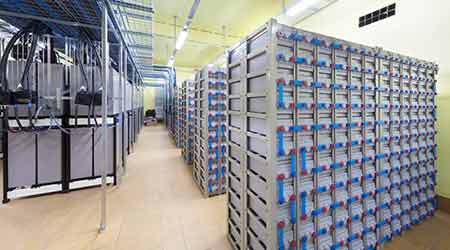Level 1: N Systems Provide Base-Level Stand-By Power
The most cost-effective, N systems have the smallest footprint and are easiest to deploy.
An N system, or “need,” provides base-level stand-by power. The quantity of equipment installed is equal to the quantity of equipment needed to serve the load. For example, a single 300kW UPS or two paralleled 150kW UPS modules are installed to serve up to a 300kW load.
A typical N deployment is a tenant-installed UPS for IT equipment that is connected to the base building generator via automatic transfer switch. The main purpose of the UPS in this scenario is to support the IT equipment load from the time utility power drops until the generator is ready to accept the load, or to support the IT equipment load in the event of a short blip in utility power.
In the event of a utility outage, N-system tenants can implement safe shutdown of IT equipment, or send employees to work at home or at different offices in the same vicinity.
To maximize IT equipment uptime while it is running on generator power, the systems that provide cooling to the IT equipment should also be supported by the generator.
Pros: An N system is the most cost-effective solution to providing a small level of stand-by power that has the smallest footprint and that is most feasibly deployed.
Cons: Stand-by power systems failure could cause an extended outage, and regular maintenance of that equipment may necessitate outages since an N system is not concurrently maintainable. Single points of failure exist throughout the system.
Related Topics:

















